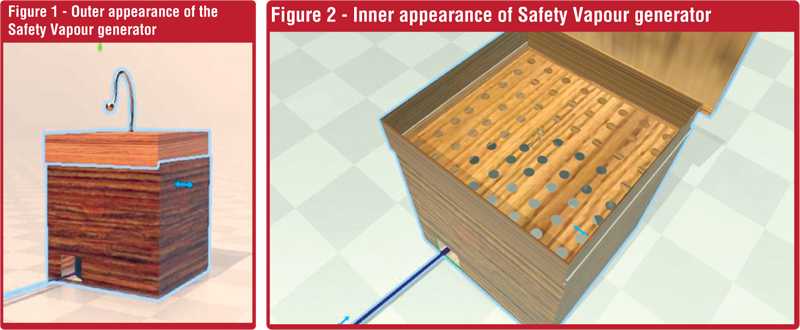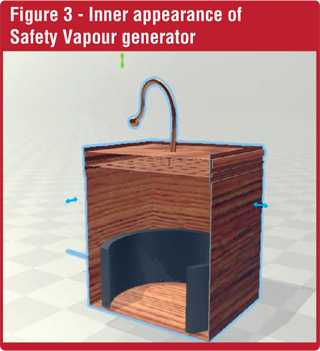Friday Apr 19, 2024
Friday Apr 19, 2024
Saturday, 7 November 2020 00:30 - - {{hitsCtrl.values.hits}}

 As world history has shown in many instances, in every worst situation, the best of a nation’s talent, commitment and determination surfaces. To allow it to surface, and to encourage it, and to facilitate its birth, every citizen has a role to play.
As world history has shown in many instances, in every worst situation, the best of a nation’s talent, commitment and determination surfaces. To allow it to surface, and to encourage it, and to facilitate its birth, every citizen has a role to play.
Sri Lanka is a country with a very rich medical tradition and heritage which boasts of the world’s first hospital in Mihintale. We are a nation which could have been right on top where global medical expertise is concerned if we had cherished what was ours, protected it, conserved it and incorporated it actively and genuinely into our policy and promoted it with modern technology, not limited to rhetoric, but as an active mechanism visible in daily actions and decisions of people.
The scope for innovations to promote our traditional medical heritage has always been there. Today such innovations are visible especially in rural areas but often with little opportunity for exposure.
The Harmony page, a special initiative of the Daily FT to integrate all thoughts and initiatives that bring meaning to life, is making a special effort to get such information and showcase them for public recognition as well as follow up.
We therefore feature below a prototype for an innovation sent to us by Sri Lankan Engineer Dr. Sudath Rohitha. He is also an independent researcher on diverse aspects of Lankan traditional heritage mainly related to medicinal heritage devices.
COVID-19 and Lankan invention potential
Eng. Dr. Sudath Rohitha has decided not to waste time at this point on applying for a patent for the ‘Portable Safety Vapour Generator’ and instead is placing the details for creating this device in public domain, given the current national circumstances, in the best interest of the public. Hence any company/companies or any other entity, could begin to manufacture this device using the below information as long as it affordably serves the masses.
Eng. Sudath Rohitha will stand ready to provide any technical assistance to any company/companies, etc., that want to take up the production of this device. “I want my invention to be publicised through the mainstream media for the good of the country and not for any revenue generation expectation,” Eng. Sudath Rohitha emphasised.
Below are the related details.
Sri Lankans have been using the traditional vapour pot (a humalaya (vapour) Mudttiya since centuries for disease curative purposes through the herb infused steaming method which is a key component of indigenous medicine therapy for respiratory health and elimination of fever. Traditionally a pot is kept on fire with herbs and then has to be manually shifted to enable the vapour to be inhaled. This could sometimes be cumbersome and could lack safety features. “There have been many burn-related accidents recorded in the past connected with steaming. Therefore, I have added the necessary safety features to this device to develop it without destroying its traditional heritage features to enable it to be easily used for relevant curative therapies associated with respiratory health,” Eng. Rohitha explained.
The given illustrations present the prototype for a portable Safety Vapour Generator that could be plugged in to an electric power circuit and then dismantled very easily. It can be made with local traditional medicine related material and with clay as in the ‘Dum Hattiya’ concept.
It is portable, and can be shifted to whatever the location easily and safely.
There is a heat adjuster that could be changed to needed heat levels of the vapour according to what the user is comfortable with. For the heat adjustment there is a regulator which is easily adjustable. In addition, there is an auto heat sensor through which the user can upgrade as per the requirement.
This innovation can be upgraded to any level; from a basic to luxury condition, where the differences will be the functionality upgrades and the unit cost of the item.
The pot which holds the water could be made in clay or aluminium and is immersed in the wooden box which is constructed with handle/s. As mentioned above, this device can be produced at many levels ranging from simple to luxury, with use of different materials (even with different medicinal wood) to enhance health. The size also could vary from 6×6×8 inches to large. The production cost of the smallest and simplest portable vapour generator is Rs. 900. In addition, a cotton umbrella like contraption could be produced as shown in the illustrations below, to cover the face for better efficacy.
The basic following materials are needed to produce this device:
1. Clay (if pot immersed in wooden structure is clay)
(Traditionally and medicinally this is ideal and preferred).
2. Aluminium (if pot immersed in wooden structure is aluminium)
3. Wood (it is possible to make the internal structure in medicinal wood in consultation with a qualified Ayurveda or indigenous medicine doctor).
4. Wiring as needed.
5. Cloth as needed for the outer structure which is akin to a mosquito net – circle shape made with iron or PVC pipe.
In addition, there should be a regulator and a thermometer fixed inside the umbrella. There can also be an in-built thermometer fixed to the vapour generator machine.
Eng. Sudath Rohitha can be contacted on 071 972 8518 or 077 339 8989.

(The Harmony page would like other inventors who are making health-related innovations at this time especially incorporating our Lankan indigenous medicinal heritage to send us their innovation details for publication support.